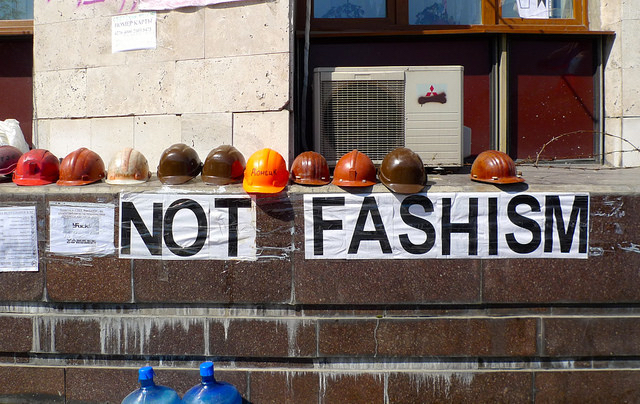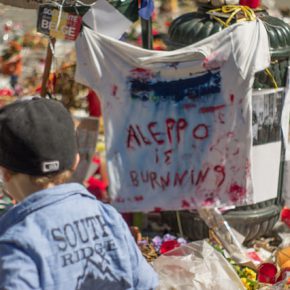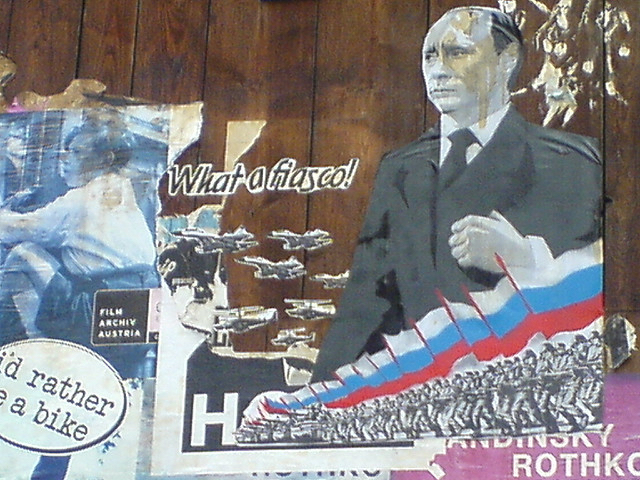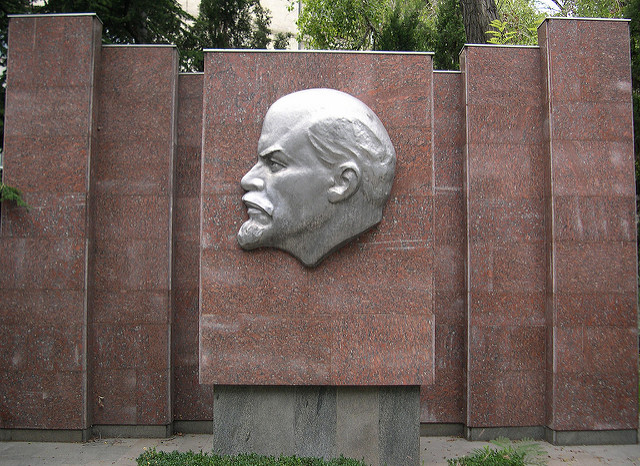In April and May 2014, anti-government paramilitaries overran first Crimea and then moved quickly into eastern Ukraine, doing so with the backing and organization of the Russian armed forces and intelligence community. As the late Boris Nemtsov outlined in his report on “Putin’s War” in Ukraine, the groundwork was well-laid to take advantage of the post-Maidan chaos.
“Ukrainian army generals and officers were recruited … local separatist politicians and media actively supported Russia’s actions … [and] Crimean business also displayed its loyalty, receiving favorable loans from Russian banks.” Annexation, however, has not followed for the “people’s republics” of Luhansk and Donetsk as it has for Crimea. Instead, they continue to portray themselves as “Novorossiya”, a name harkening back to a Tsarist polity formed centuries before with a partial connection to the present day territory.
The insurgency, and ensuring “anti-terror operation” (ATO) waged by the Ukrainian armed forces against the Russian-backed separatists, has taken thousands of lives, displaced 1.7 million people, cost billions of dollars, and displaced over a million civilians while severely undermining the rule of law in loyalist Ukraine. The Donbas, Ukraine’s industrial heartland, has been economically kneecapped, and poverty with the region is rising despite Russia’s continued support for the “people’s republics.”
The collapse of the “ideological” project – which came as a rude awakening to those who had signed on for the panegyrics – is the result of growing Russian disinterest in the experiment and a pivot to Syria by the Kremlin that is absorbing significant resources. But so long as the separatists believe – and can physically afford to believe – they have an “out” in the form of Russian patronage and the ability to strike corrupt bargains with officials in loyalist Ukraine , they will not actually respect ceasefires or take interest in reconciliation deals. The government of Russia will only signal to the separatists that their project is at an end when the cost exceeds the benefit. EU sanctions and NATO saber rattling have had no effect in this regard (in part because members of both are divided over how to respond).
Yet for all the influence Russia has over the conflict in Ukraine today, the main “argument” on the ground is still one between local forces seeking redress for grievances. Some Ukrainian leaders have sided with the separatists for self-aggrandizement, while some Russian officials fear what effects continued conflict will have, not least the inability of the government to cater to its inner circle and fear that have-nots will align themselves with those who attack Putin from the right for being insufficiently committed to “Greater Russia.”
What then, drove Ukrainian citizens to welcome intervention and undertake their separatist projects in Luhansk and Donetsk in the spring of 2014? Polish sociologist Ostap Odushkin produced a rubric for Ukrainian regional politics in 2000 that is still useful today in understanding the divides between Kiev and the separatists that formed the basis for the LPR and DPR’s continued existence. Even though the initial agitators, including many of their weapons, came over from Crimea after the Russian annexation to begin the revolt, they found fertile soil. The “revolt” took place in spite of the decline of separatist aspirations that had already peaked years prior, in the middle of the 1990s.

Odushkin discerns an “ethnic divide” that separates a Russified culture from a more overtly nationalist “Ukrainian” identity. The latter identity has increasingly gained currency since the Orange Revolution a decade over. It is a narrative for drawing historical continuities to majority-ethnic Ukrainian polities in the region that predated, but eventually became, the modern borders of Ukraine under the Soviet Union.
As Odushkin notes, this was the “peripheral, suppressed” narrative when Ukraine left the USSR, even though at least 72% of the population was ethnic Ukrainian, with most of the rest ethnic Russian followed by Tatars and other minority nationalities. But, it has since become the view of the majority.
What followed independence was a general “Ukrainization” of the country, such that the language issue evolved into a larger cultural divide where ethnic Ukrainians, according to Hugo Lane, “became identified with being less Soviet, and often with the best of intentions felt it was their duty to evangelize Ukrainian identity among those who used Russian.”
Though separatist movements emerged during glasnost and the heady days of the early 1990s, they were largely bought off through the politics of federalization, which was the case in formerly “autonomous soviet socialist republics” or “autonomous oblasts” of the Russian Federation (outside of Chechnya), when in the decade leading up to Putin’s first presidency, “the leaders of the republics were primarily concerned with establishing their republics’ political and economic autonomy from Moscow.”
At the same time in Ukraine, aspiring separatists were mollified with extensive economic concessions in the eastern regions and also Crimea. Crimean leaders, like their counterparts in the Donbas, attempted to redefine the peninsula as an autonomous region through a major grassroots campaign, and won special concessions from Kiev in exchange for not pursuing a planned referendum in 1992.
After strong showings in local elections in Donbas in the late 1990s, the autonomists’ demands were eventually addressed by Kiev. Despite the problems this caused in terms of national unity, electoral coalition building, and tax collection for the central government, it was a workable arrangement. These arrangements, though, only deferred debates over post-Soviet identity and normalized the “separateness” of Crimea and the Donbas from the rest of the country, despite their importance to the overall economic health and national security.

Autonomy, more often than not, made abuse of power easier since it reduced what little oversight there was. In Crimea, employment, privatization, welfare cuts, and official disinterest by the center for the periphery dominate the pre-Maidan environment. In Donetsk, according to Tetyana Malyarenko and David J. Galbreath, the pro-Russian local elites were compelled to step down between 2005 and 2010, but remained influential in local politics and subsequently returned to power after Viktor Yanukovych won the 2010 elections. Simply put, the normalization of autonomy during this period helped the current separatist leadership adapt local institutions and conciliatory elites to their needs.
There were ready pools of talent and precedent to draw upon for running the southeast of the country on a track parallel to Kiev, especially in the cities of Donetsk and Sevastopol: “a tight-knit group of local Russian activists who have been supporters of the pro-Russian cause in Donetsk” increasingly took charge of civil affairs in the LPR and DPR from 2014, in the words of The Financial Times.
This does not mean that the separatists are assured the population’s loyalty: instead, it indicates that “many locals are still taking part in it out of a simple desire to get on with their lives.” Indeed, both sides – loyalist and separatist – seem incapable of surviving without the other, and putting aside the ideological hostility. “We export 90 percent of our coal to Ukraine” as one mining director in the separatist mining town of Snizhe told reporters earlier this year, a trade whose existence is freely admitted to on either side of the frontlines.
Questions of culture are not insignificant in the Donbas conflict, but the other divide Odushkin describes among Ukraine’s regions is less a matter of language than of economics. Despite the mix of imperial and communist nostalgia that suffuses the “Novorossiyan” breakways, pro-Russian parties in Ukraine have long suffered for advancing a separatist agenda that included union with Russia – even today, Russian-financed activists in Ukraine advocating such positions have failed to draw large crowds, much to the chagrin of their backers.
This is the divide between local workers and bosses, and then again between local bosses and their nominal overseers at the higher regional or federal levels. When the separatist administration first took office, initial decrees repudiated privatization programs for welfare services – programs that have, historically, polled the lowest in Donbas and Crimea compared to other regions of Ukraine – and sought to reverse privatization deals on industry that had empowered now-decamped members of the local elites.
The “people’s republics”, despite rejecting the current Ukrainian state, nonetheless still seek to imitate it. In doing so, they demonstrate the serious weaknesses of the separatist project in the long run. On November 2, 2014, they held their own “national” elections, in defiance of the internationally recognized national vote held in the rest of Ukraine on October 26, 2014 and terms for a ceasefire with the government of Ukraine reached in Minsk a few weeks prior.

The elections were described as illegitimate by Organization for Cooperation and Security in Europe (OSCE), which vetted the October 26th contests. Despite the censure of the “people’s republics” by the OSCE and other national governments, the separatists still managed to win endorsement from supranational observation bodies: the Eurasian Observatory of Democracy and Elections, the European Centre for Geopolitical Analysis, and the Agency for Cooperation and Security in Europe. If the names sound derivative of groups like the OSCE, it is intentional: far-right European politicians formed all three of these groups as an “alternative” to them.
These unrecognized bodies served two purposes. The first is to mock and denigrate the OSCE. The second is to tacitly acknowledge just how deeply they, the separatists, care about legitimacy in order to better manage their territories – they were denied “legitimacy” in the mainstream, so they created their own alternative forums to tell them that they are in the right. Separatist state building measures – what few there are – adopt the mechanisms of the pre-war order, but apply a coat of “Novorossiyan” paint, which on closer inspection is more parochial than “Greater Russian” pro-Sovietism or pro-monarchism.
The social conservatism and welfarism simultaneously desired by the separatists’ supporters is not oxymoronic: it is less a reaffirmation of “Greater Russia” sentiment among the Russian-speaking minorities in Donetsk and Luhansk, but a rejection of the uncertainty and corruption that has shaped post-communist Ukraine … unfortunately, the rebels “solution” to that has been to hitch their wagon to an even more uncertain and corruption patron in the form of Vladimir Putin’s Russian state.
Even the most prominent separatists have found his government’s clandestine largesse to be fickle. It is no secret that many of the original architects of the LPR and DPR’s separatism – Russian nationals such as former DPR “Prime Minister” Alexander Borodai, separatist icon Igor Girkin, ex-mayor of “liberated” Slavyansk Vyachaslav Ponomarev, militia leaders Igor Belzer and Nikolai Kozitsin, and former Transnistrian KGB leader Vladimir Antyufeyev – have had to leave the territories in disgrace. And Novaya Gazeta, one of Russia’s leading independent newspapers, has carried several stories outlining from “unnamed sources” a shakeup in the kitchen cabinet that has allegedly been responsible for Russia’s Donbas strategy.
These narrative lines all assert that the Russian government has for some time sought to dispose of the more independently minded separatist leaders, in particular the disgraced Igor Girkin who helped initiate the anti-Kiev riots in Donetsk and for a while was the public face of the whole separatist movement. The aforementioned Igor Girkin, separatist bête noir who was one of the agitators from Crimea who helped start the revolt in Donbas, it should be noted, is critical of both the separatist and Russian governments, now attacking both from the ultranationalist right for perceived corruption and cowardice.
While Kievan loyalists, and the persecuted Tatar ethnic minority, have lost the most from the Russian annexation, but so too have many members of the historic pro-Russian leadership, who have traded in their relatively sheltered economic status and protection under the Ukrainian rule of law for increased competition with Russian enterprises and arbitrary property seizures. This is also the case in the DPR and LPR. In the 1990s, pro-Russian separatists lost local favor, when their supporters realized they were “unable to markedly improve the peninsula’s socio-economic situation, which was at the root of the region’s discontent with Ukraine’s national government.”
Photographs courtesy of Cabiria8, Alexey Druzhinin, and Polina L. Published under a Creative Commons license.





